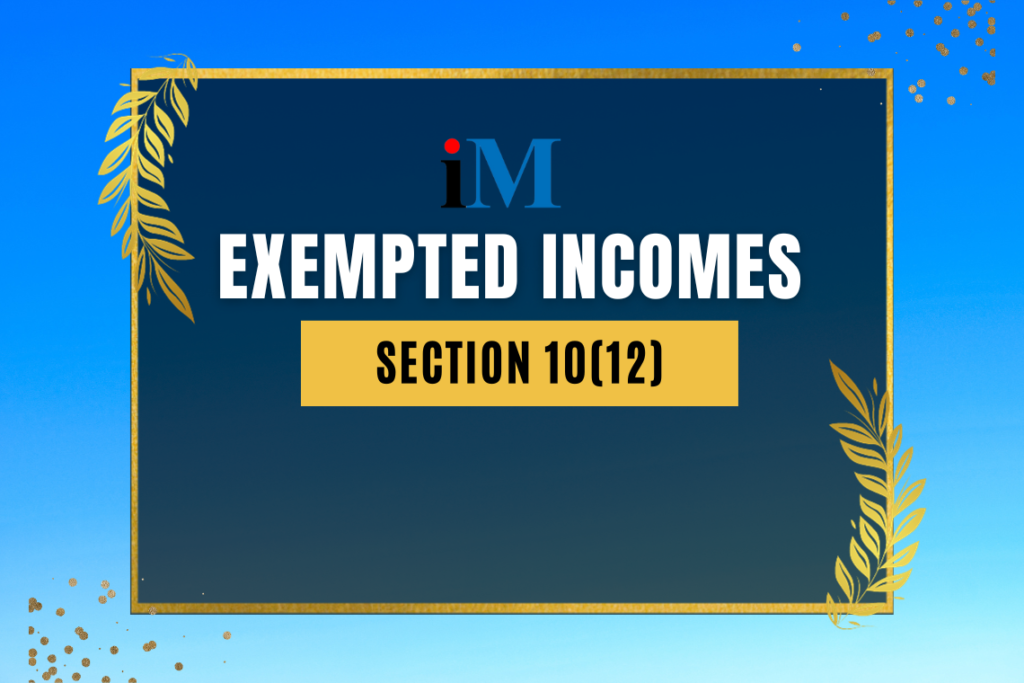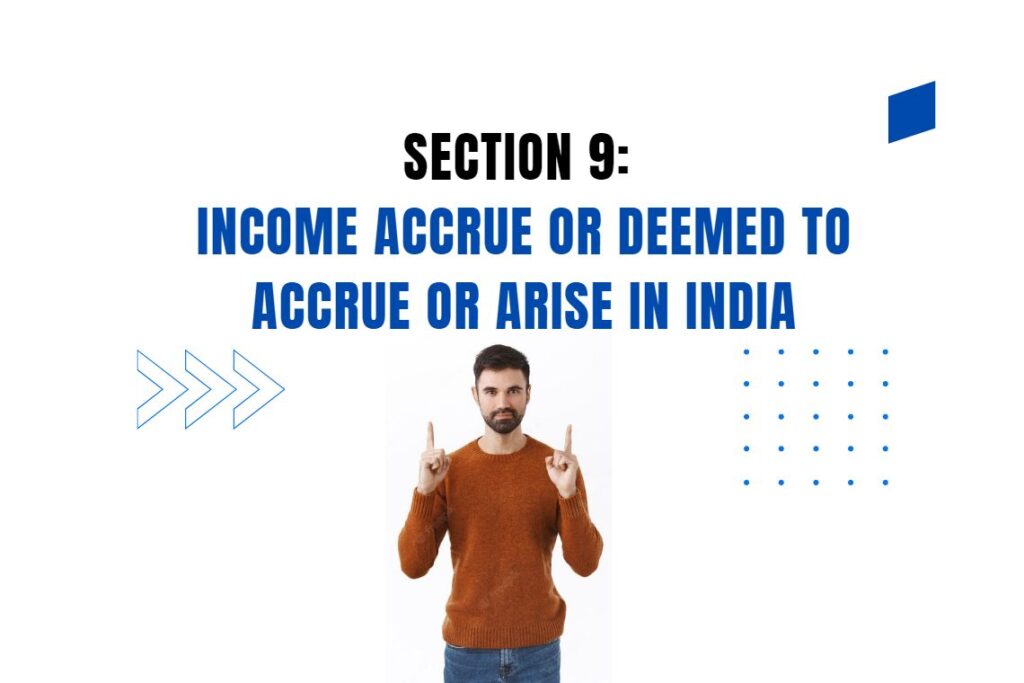A recognized provident fund is a retirement savings scheme that is approved by the government. It is a tax-efficient way to save for your future and enjoy certain benefits under Section 10(12) of the Income Tax Act.
Section 10(12) provides for exemption from tax in the hands of an employee on the following payments received from a recognized provident fund:
- The employee’s own contributions to the fund.
- The interest accrued on the employee’s own contributions.
- The employer’s contributions to the fund, up to a certain limit.
The limit for exemption of employer’s contributions is the lower of the following:
- 12% of the employee’s salary (including basic pay, dearness allowance, and other allowances that form part of the salary).
- The actual amount contributed by the employer.
Any employer’s contributions in excess of the above limit is taxable as income in the hands of the employee.
Under Section 10(12), any payment received from a recognized provident fund is exempt from tax. This means that the amount you receive from your provident fund at the time of retirement or resignation is not taxable. However, there are certain conditions that need to be met in order to avail this exemption.
Conditions for Exemption
In order to qualify for the tax exemption under Section 10(12), the following conditions must be met:
- The employee must have completed a minimum of 5 years of continuous service with the employer.
- The employee must have maintained the provident fund account with a recognized fund.
- The employee must not have transferred the balance from the recognized provident fund to any other fund.
It is important to note that if the employee fails to meet any of these conditions, the amount received from the recognized provident fund will be taxable in the year of receipt.
Tax Treatment of Payments
Payments received from a recognized provident fund can be categorized into two types:
Withdrawal before 5 years of continuous service:
If an employee withdraws the amount from the recognized provident fund before completing 5 years of continuous service, the entire amount received will be taxable in the year of withdrawal.
Withdrawal after 5 years of continuous service:
If an employee withdraws the amount from the recognized provident fund after completing 5 years of continuous service, the amount received will be fully exempt from tax.
It is important to keep in mind that even though the amount received from a recognized provident fund is exempt from tax, it is still necessary to report it in your income tax return under the exempt income section.
Payments from a recognized provident fund may include:
Section 10(12) of the Income Tax Act, 1961 provides an exemption from income tax for the following payments from a recognized provident fund (RPF):
- The contributions made by the employee to the RPF.
- The interest income earned on the RPF balance.
- The sum assured on the death of the employee.
- The maturity benefit on the retirement of the employee.
- The withdrawal of the RPF balance on resignation or termination of employment.
Exceptions to the Exemption U/s 10(12)
However, the exemption under Section 10(12) is not available for the following amounts received from an RPF:
- Any loan taken against the RPF balance.
- Any amount received on surrender of the RPF policy.
- Any interest income earned on the PF balance.
- The withdrawal of the PF balance before the completion of 5 years of service, unless the withdrawal is due to the employee’s death, ill-health, or the discontinuance of the employer’s business.
| · Taxability of Interest on recognised provident fund where contribution is exempt [Proviso inserted under section 10(12)]
· The provisions of this clause (i.e., exemption under section 10(12)) shall not apply to the interest income accrued during the previous year in the account of the person to the extent it relates to the amount or the aggregate of amounts of contribution made by the person exceeding Rs. 2,50,000 in any previous year in that fund, on or after 1.4.2021, computed in such manner as may be prescribed. [First proviso] · However, if the contribution by such person is in a fund in which there is no contribution by the employer of such person, the provisions of the first proviso shall have the effect as if Rs. 2,50,000, had been substituted by Rs. 5,00,000 [Second proviso] |
Examples of Exemptions :
Here are some examples of how Section 10(12) applies to different types of payments from an RPF:
- Example 1: An employee dies in service and his family receives the sum assured of Rs. 10 lakh from his RPF account. The entire amount of Rs. 10 lakh is exempt from income tax.
- Example 2: An employee retires from service and receives the maturity benefit of Rs. 5 lakh from his RPF account. The entire amount of Rs. 5 lakh is exempt from income tax.
- Example 3: An employee resigns from service after 7 years and withdraws the PF balance of Rs. 3 lakh from his RPF account. The entire amount of Rs. 3 lakh is exempt from income tax.
- Example 4: An employee leaves his job after 3 years and withdraws the PF balance of Rs. 2 lakh from his RPF account. The entire amount of Rs. 2 lakh is taxable.
Additional Details about Recognize Provident Fund (RPF):
Here are some additional details about the recognized provident fund:
- An RPF is a provident fund that has been recognized by the Central Government under the Income Tax Act, 1961.
- RPFs are typically offered by employers to their employees.
- Employees can contribute a part of their salary to their RPF account.
- Employers also contribute a part of the employee’s salary to the RPF account.
- The employee’s contributions to the RPF account are eligible for a deduction from income tax under Section 80C of the Income Tax Act, 1961.
- The interest income earned on the RPF balance is exempt from income tax.
- The employee can withdraw the RPF balance on resignation or termination of employment.
- The employee can also transfer the RPF balance to another RPF maintained by their new employer.



![Residential Status [Sections 5 to 9B]](https://incometaxmanagement.in/wp-content/uploads/2023/09/Residential-Status-Sections-5-to-9B-1024x683.jpg)

![EXEMPTED INCOMES [Section – 10, 10AA, 11 to 13A]](https://incometaxmanagement.in/wp-content/uploads/2023/09/Exempted-Incomes-Section-10-1024x683.jpg)

![Income of an Electoral Trust shall be Exempt [Section 13B]](https://incometaxmanagement.in/wp-content/uploads/2023/10/61-Exempted-Incomes-Section-13B-1024x683.png)
![Incomes of Political Parties [Section-13A]](https://incometaxmanagement.in/wp-content/uploads/2023/10/60-Exempted-Incomes-Section-13A-1024x683.png)
![Special Provisions in respect of Newly-established Units in Special Economic Zones (SEZ) [Section-10AA]](https://incometaxmanagement.in/wp-content/uploads/2023/10/59-Exempted-Incomes-Section-10AA-1024x683.png)
![Exemption in respect of income chargeable to Equalization Levy [Section 10(50)]](https://incometaxmanagement.in/wp-content/uploads/2023/10/58-Exempted-Incomes-Section-1050-1024x683.png)
![Income of a Developmental Financing Institution (DFI) to be Exempt [Section 10(48E)]](https://incometaxmanagement.in/wp-content/uploads/2023/10/57-Exempted-Incomes-Section-1048E-1024x683.png)